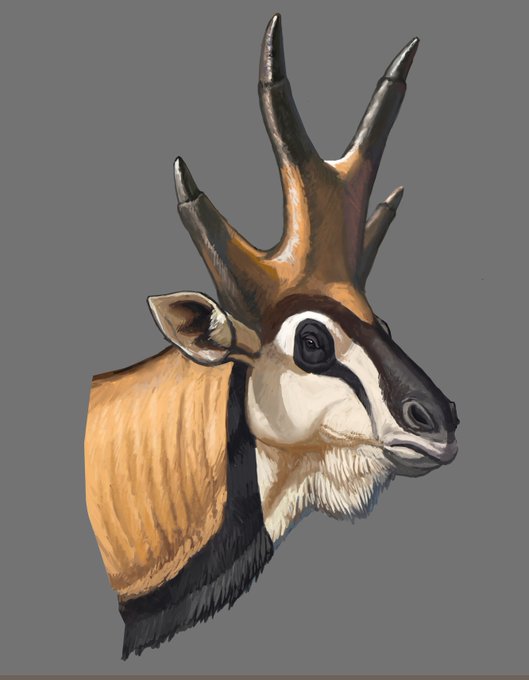Miocene,のTwitterイラスト検索結果。 13 件
Hippopotamus Gorgops
Hippopotamus gorgops also called Gorgon-eyed river horse, is an extinct species of hippopotamus. It first appeared in Africa during the late Miocene, and eventually migrated into Europe during the early Pliocene. It became extinct prior to the Ice Age. Wit
MEGANTEREON SP.
The Dirk-toothed Megantereon is usually associated with Pliocene and middle Pleistocene faunal assemblages. A jaw found in the Chadian site of Toros Menalla, dates the origin of Megantereon back to Late Miocene, around 7 Mya.
#paleoart #megantereon
TCHADAILURUS ADEI
One of the most mysterious sabre-toothed cats.
Definitely one of the most primitives and smallest.
From African (Chad) Late Miocene, around 7 Mya.
#sabretooth #paleoart
Hippopotamus Gorgops
Hippopotamus gorgops also called Gorgon-eyed river horse, is an extinct species of hippopotamus. It first appeared in Africa during the late Miocene, and eventually migrated into Europe during the early Pliocene. It became extinct prior to the Ice Age. Wit
What is this I'm hearing about a pachycephalosaur-like giraffid from the Miocene, apparently with even more adaptations to headbutting than bighorn sheep and the like, and why haven´t I seen any pictures of it breaking a predator's ribs? :B #Discokeryx
As a last point, sad no doubt to some, it must be pointed out that Bullockornis, the 'Demon Duck of Doom', died out in the Miocene, and thus many millions of years before any human set foot on Australia.
Some fossil Giraffes
1.Giraffokeryx punjabiensis (Miocene,India);
2.Shansitherium tafeli (Miocene,China);
3.Sivatherium giganteum (Micocene,India);
4.Bramatherium perimense(Micocene to Pliocene,India to Turkey)
Apparently it's #InternationalHyenaDay, so have this #Dinocrocuta! This giant hyena roamed Eurasia during the Miocene, hunting rhinos, stealing sabercat kills, and overall being badass. #Hyenas get an unfair rap as cowardly animals but not much would've scared Dinocrocuta!
Iranotherium morgani, an extinct genus of Rhino from the late Miocene, and a relative of Elasmotherium. The only known rhinoceros with rugosity on each zygomatic arch of the male individual. As evident in this individual from the Late miocene of Linxia basin.
#paleontology
New online: McGrath, Flynn & Wyss – Proterotheriids and macraucheniids (Litopterna: Mammalia) from the Pampa Castillo Fauna, Chile (early Miocene, Santacrucian SALMA) and a new phylogeny of Proterotheriidae https://t.co/TQdF2RVJI7
Here's the Named in action, defending their herd from attack. #Ratha #graphicnovel . This is set in the Early Miocene, about 20 million years ago. Ratha and her kind descended from #nimravids.
The #Ratha #GraphicNovel is set in the early #California #Miocene, just after the #Oligocene. WIP by Dani Long and Tod Wills. We used this page to show various strange creatures of that time. Can you name them? #comic #paleofiction #xenofiction

























